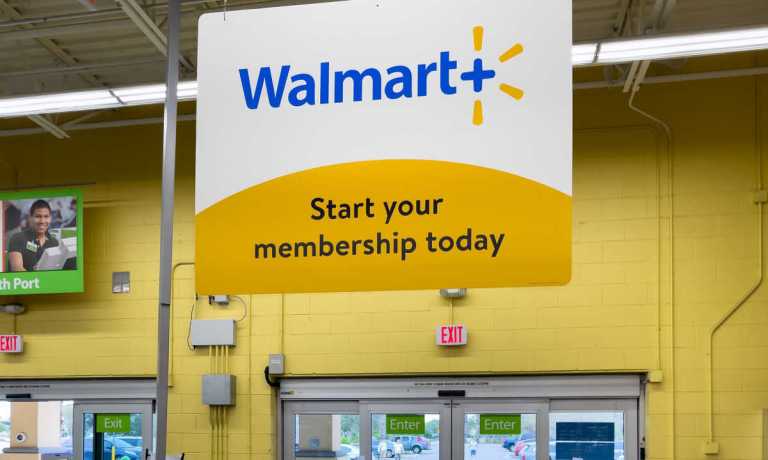
As Amazon Prime subscribers ready for the globally anticipated premier of “The Lord of the Rings: The Rings of Power,” series, Walmart+ members now have the Paramount+ vault as a benefit, with properties like “Star Trek” and “Frasier.” It’s a cinematic example of the arms race between the two retail titans, and illustrates the mountain Walmart+ needs to scale.
Walmart’s latest attempt to add value — and subscribers — to Walmart+ happened Wednesday (Aug. 24) when the big box behemoth announced Walmart Rewards, giving Walmart+ subscribers access to more discounts and cash-back rewards than non-subscribers.
That press release notes, “Walmart Rewards is a new and easy way for Walmart+ members to earn additional savings toward future Walmart purchases. Let’s say after a few shopping trips or online orders, a member has accumulated $10 in Walmart Rewards. When they apply those savings at checkout, what was previously a $25 basket now only costs $15.”
This is additive to the Paramount+ benefit unveiled in mid-August, and a clear indication that Walmart wants to pump up its subscriber base. Walmart+ membership isn’t disclosed. The Wall Street Journal recently reported that it’s hovering in 16 million member range, although PYMNTS research finds it may be as high as 50 million. We estimate that Prime has 167 million members, which puts all the new Walmart+ bells and whistles into perspective.
However, as time goes on and data accumulates it’s becoming clear that members value the two retail subscriptions quite differently, with members looking for savings and perks but not engaging with the two retail leaders in the same way or subscribing for the same reasons.
For the PYMNTS report “Walmart+ Weekend: Prime Day Rival Or Trip To The Grocery Store,” we surveyed 1,047 Walmart+ subscribers and 2,055 Amazon Prime subscribers, finding Walmart+ and Prime differ widely, largely revolving around essentials like groceries and gas.
Per the study, “PYMNTS found that 43% of Walmart+ members signed up to take advantage of same-day grocery delivery, while just 13% of Prime members did the same. Another 20% of Walmart+ members cited gasoline discounts as a motivator — a perk not offered by Prime.”
Read the study: Walmart+ Weekend: Prime Day Rival Or Trip To The Grocery Store
Food Fight
Even though same-day delivery appeals to 43% of Walmart+ members it’s by no means their main motivator as Walmart shoppers are more likely to use curbside or BOPIS — in other words, go to the store — than to have Walmart orders delivered same-day.
That contrasts the pull of same-day delivery for Amazon Prime members, for who free shipping has always been a potent reason to pay what is now a $139 annual fee ($14.99 a month). Walmart+ costs $98 a year or $12.95 per month.
As for battleground categories, it comes down to groceries. Walmart understands this, helping explain the new Walmart Rewards program, which works the same whether shopping and paying online or in-store using the Walmart app. Specific promotional verbiage talks about earning discounts on “future purchases” — a signal to buy more and earn more.
According to the PYMNTS Walmart+ Weekend report, 57% of Walmart+ subscribers who shopped during the June event purchased grocery products, “versus just 24% of Prime members who did so during Prime Day 2021. This indicates that the biggest impact of Walmart+ Weekend was to incentivize members to stock up on groceries in advance, frontloading essential spending that was already in their budgets to capture discounts.”
Our study “Prime Day 2022: Inflation Hits, But Amazon Still Wins” notes that “only 23% of Prime Day shoppers bought groceries — roughly half the 45% rate of their Walmart+ Weekend counterparts. Conversely, shoppers buying electronics were more apt to do so on Prime Day (31%) over Walmart+ Weekend (24%).”
Get your copy: Prime Day 2022: Inflation Hits, But Amazon Still Wins